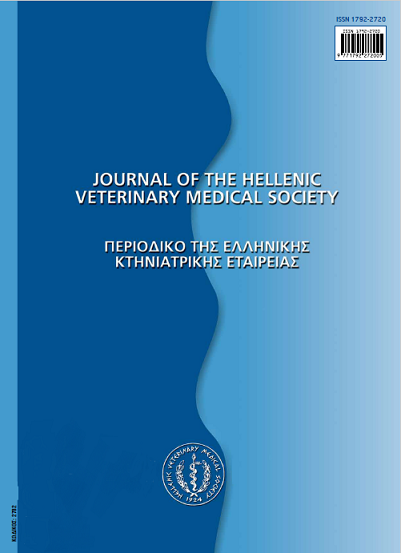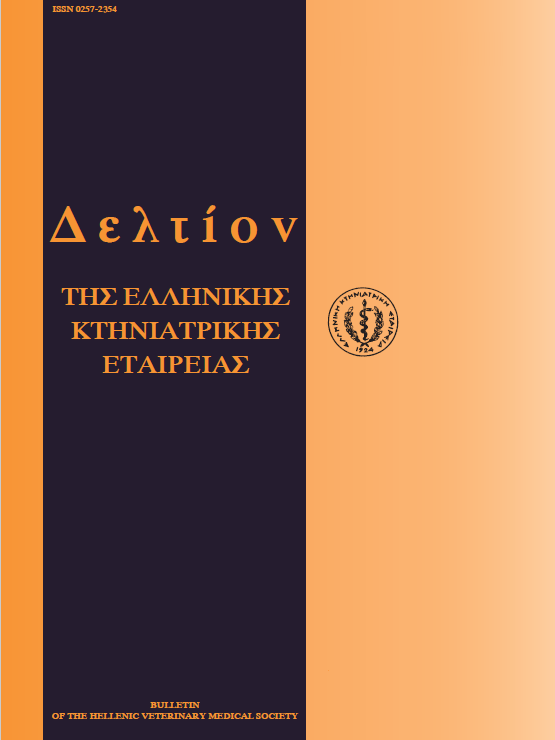Φάρμακα και περιβάλλον

Περίληψη
Τα φάρμακα είναι πολύ σημαντικά για τον έλεγχο και την καταπολέμηση των ασθενειών του ανθρώπου και τωνζώων, αλλά ταυτόχρονα μπορούν να εμφανίσουν και ποίκιλες ανεπιθύμητες δράσεις με δυσμενή αποτελέσματα σε διάφορους οργανισμούς του περιβάλλοντος. Αν και οι δράσεις αυτές των φαρμάκων στον άνθρωπο και τα ζώα έχουν μελετηθεί και διερευνούνται συνεχώς για την ασφάλεια τους με τοξικολογικές έρευνες, οι πιθανές περιβαλλοντικές τους επιπτώσεις τόσο κατά τη βιομηχανική τους παραγωγή όσο και μετά τη χρήση τους δεν είναι απόλυτα σαφείς και διευκρινισμένες. Γι' αυτό, τα τελευταία χρόνια το θέμα αυτό έχει γίνει πρώτης προτεραιότητας και μεγάλου ερευνητικού ενδιαφέροντος, αν και μερικά από τα αποτελέσματαγια ορισμένες κατηγορίες χημικών ενώσεων, ιδιαίτερα κάποιων ανθελμινθικών και αντιβιοτικών, είναι αρκετά γνωστά. Όμως, υπάρχουν και πολλές άλλες ομάδες φαρμακευτικών ουσιών, οι οποίες μπορούν να επηρεάσουν δραστικά τους οργανισμούς του περιβάλλοντος. Το γεγονός αυτό γίνεται ακόμα πιο πολύπλοκο, γιατί κάποιες φαρμακευτικές ουσίες μπορούν να προκαλέσουν δυσμενείς καταστάσεις σε βακτήρια και ζώα σε συγκεντρώσεις κατά πολύ χαμηλότερες από εκείνες που συνήθως χρησιμοποιούνται στις πειραματικές δοκιμές ασφάλειας και αποτελεσματικότητας. Ακόμα, τα προϊόντα της αποδόμησης, του μεταβολισμού, αλλά και ο συνδυασμός τους με άλλες βιολογικά δραστικές ουσίες ενδέχεται να προκαλέσουν απρόβλεπτες περιβαλλοντικές διαταραχές. Αν και είναι αρκετά ασφαλές να θεωρήσουμε ότι οι ουσίες αυτές ουσιαστικά δεν είναι βλαβερές για τον άνθρωπο, πρόσφατα έχει αρχίσει η έρευνα για να διαπιστωθεί εάν και πώς επηρεάζουν τους οργανισμούς στο περιβάλλον και τι σημαίνει αυτό για την περιβαλλοντική υγεία και την υγεία μας. Τα φάρμακα έχουν απελευθερωθεί στο περιβάλλον εδώ και δεκαετίες, αλλά οι ερευνητές μόλις πρόσφατα άρχισαν να προσδιορίζουν τα επίπεδα των συγκεντρώσεων τους σε αυτό. Χρησιμοποιώντας ερευνητικά δεδομένα από διάφορες χώρες προσδιορίστηκαν τα φάρμακα εκείνα τα οποία έχουν τιςπερισσότερες πιθανότητες να βρεθούν στο περιβάλλον. Για παράδειγμα, δεδομένα από την ετήσια κατανάλωση κτηνιατρικών φαρμάκων στο Ηνωμένο Βασίλειο συγκεντρώθηκαν μαζί με άλλες πληροφορίες για τον τρόπο χορήγησης, το μεταβολισμό και την οικοτοξικότητά τους, με σκοπό την ανεύρεση εκείνων των φαρμάκων τα οποία θα πρέπει να παρακολουθηθούν στα πλαίσια ενόςεθνικού διερευνητικού προγράμματος. Ταυτόχρονα, παρόμοια προγράμματα γίνονται και για τα ανθρώπινα φάρμακα χρησιμοποιώντας πληροφορίες για την ετήσια χρήση τους, τις θεραπευτικές δόσεις και τη χρησιμοποίηση ειδικών μοντέλων πρόβλεψης. Αν και οι έρευνες αυτές γενικά βασίζονται σε πληροφορίες οι οποίες είναι διαφορετικές για κάθε χώρα, εξακολουθούν να μας εφοδιάζουν με τα απαραίτητα στοιχεία για εκείνες τις ουσίες που θα πρέπει να διερευνηθούν σε διεθνές επίπεδο. Ιδιαίτερα σημαντική είναι η συμβολή της ενόργανης χημικής ανάλυσης με τις νέες αναλυτικές τεχνικές, όπως είναι η υγροχρωματογραφία σε συνδυασμό με τη φασματογραφία μάζας (HPLC-MS-MS), οι οποίες μας επέτρεψαν να κατανοήσουμε σε βάθος το πώς οιδιάφορες φαρμακευτικές ουσίες συμπεριφέρονται στο περιβάλλον, αλλά και να προσδιορίσουμε τις συγκεντρώσεις τους στα εδάφη,στα επιφανειακά, στα υπόγεια νερά και αλλοΰ. Από τη στιγμή κατά την οποία τα φάρμακα ελευθερωθούν στο περιβάλλον, μεταφέρονται και κατανέμονται σε αέρα, νερό, έδαφος ή ιζήματα ανάλογα με την επίδραση μιας σειράς παραγόντων, όπωςείναι τα φυσικοχημικά τους χαρακτηριστικά. Ο βαθμός κατά τον οποίο μια φαρμακευτική ουσία μεταφέρεται μέσα στο περιβάλλον εξαρτάται κυρίως από την προσροφητική συμπεριφορά της ουσίας στα εδάφη και από το συντελεστή απορρόφησηςνεροΰ/εδάφους, ο οποίος ποικίλει ευρύτατα ανάλογα με τη φαρμακευτική ουσία. Έτσι, οι συντελεστές προσρόφησης στα εδάφητων κτηνιατρικών φαρμάκων, οι οποίοι έχουν αναφερθεί, ποικίλλουν από <1,0 L/kg σε >6,000 L/kg (Boxall et al., 2004). Επίσης,οι φαρμακευτικές ουσίες στο περιβάλλον μπορεί να διασπαστούν από τη δράση βιολογικών οργανισμών, με αβιοτικές αντιδράσεις μειώνοντας την ισχΰ τους, αλλά δημιουργώντας και κάποια προϊόντα διάσπασης με τοξικότητα παρόμοια με εκείνη της μητρικής ένωσης. Τέλος, η αποδόμηση των φαρμάκων διαφέρει σημαντικά ανάλογα και με τις χημικές, βιολογικές και κλιματολογικέςσυνθήκες, γεγονός το οποίο καθιστά περισσότερο πολύπλοκο το πρόβλημα το οποίο απαιτεί ατομικές λύσεις χωριστά για κάθε μία φαρμακευτική χημική ένωση.
Λεπτομέρειες άρθρου
- Πώς να δημιουργήσετε Αναφορές
-
TYRPENOU (Α.Ε. ΤΥΡΠΕΝΟΥ) A. E. (2017). Φάρμακα και περιβάλλον. Περιοδικό της Ελληνικής Κτηνιατρικής Εταιρείας, 60(2), 161–178. https://doi.org/10.12681/jhvms.14925
- Τεύχος
- Τόμ. 60 Αρ. 2 (2009)
- Ενότητα
- Review Articles
Οι συγγραφείς των άρθρων που δημοσιεύονται στο περιοδικό διατηρούν τα δικαιώματα πνευματικής ιδιοκτησίας επί των άρθρων τους, δίνοντας στο περιοδικό το δικαίωμα της πρώτης δημοσίευσης.
Άρθρα που δημοσιεύονται στο περιοδικό διατίθενται με άδεια Creative Commons 4.0 Non Commercial και σύμφωνα με την άδεια μπορούν να χρησιμοποιούνται ελεύθερα, με αναφορά στο/στη συγγραφέα και στην πρώτη δημοσίευση για μη κερδοσκοπικούς σκοπούς.
Οι συγγραφείς μπορούν να καταθέσουν το άρθρο σε ιδρυματικό ή άλλο αποθετήριο ή/και να το δημοσιεύσουν σε άλλη έκδοση, με υποχρεωτική την αναφορά πρώτης δημοσίευσης στο J Hellenic Vet Med Soc
Οι συγγραφείς ενθαρρύνονται να καταθέσουν σε αποθετήριο ή να δημοσιεύσουν την εργασία τους στο διαδίκτυο πριν ή κατά τη διαδικασία υποβολής και αξιολόγησής της.




